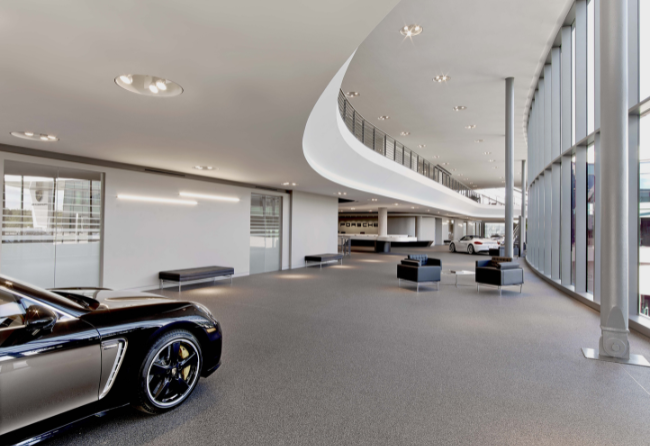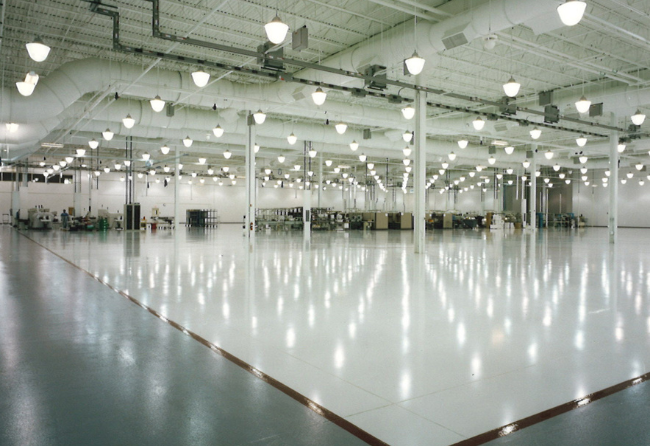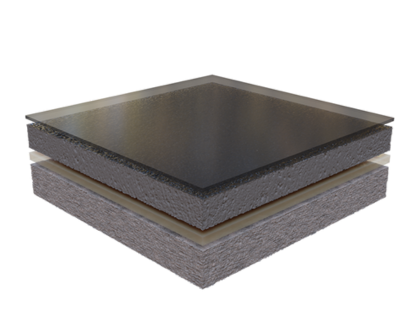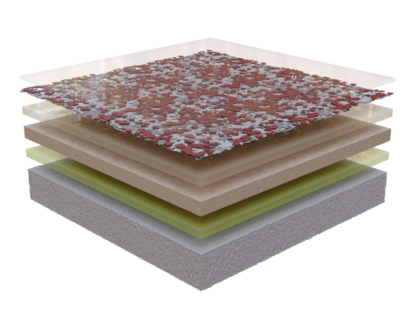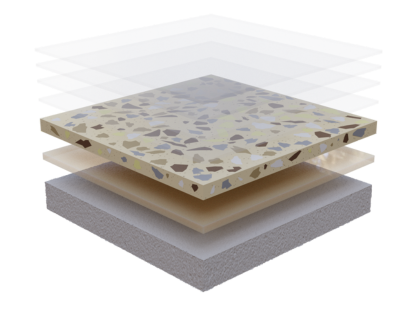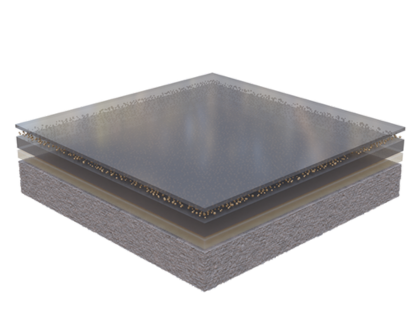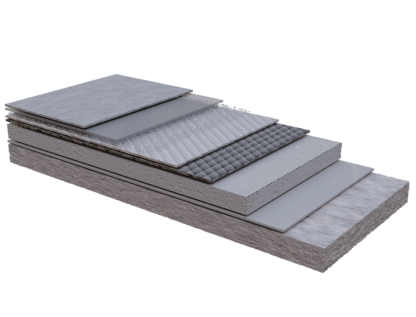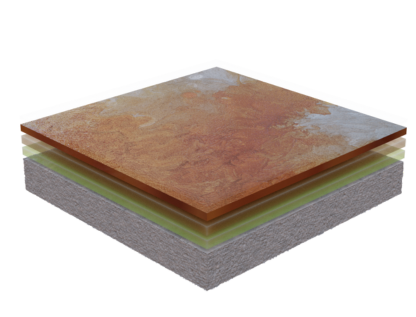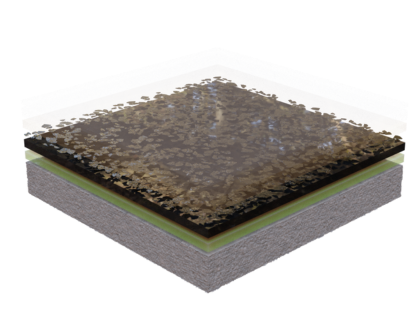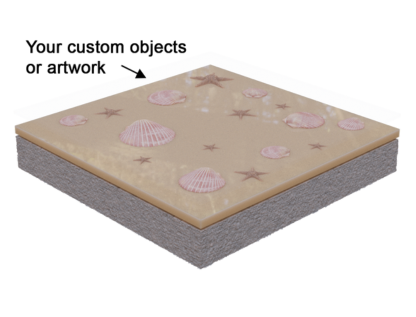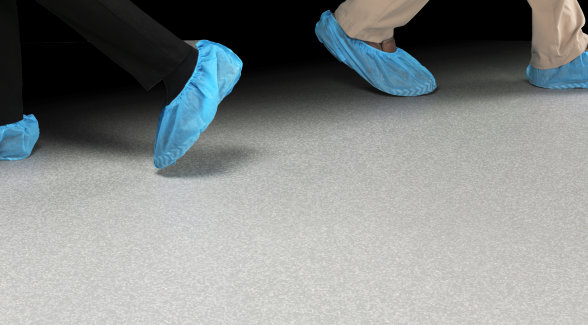Seamless Flooring
Smooth, continuous resinous flooring built for long-lasting durability and hygiene
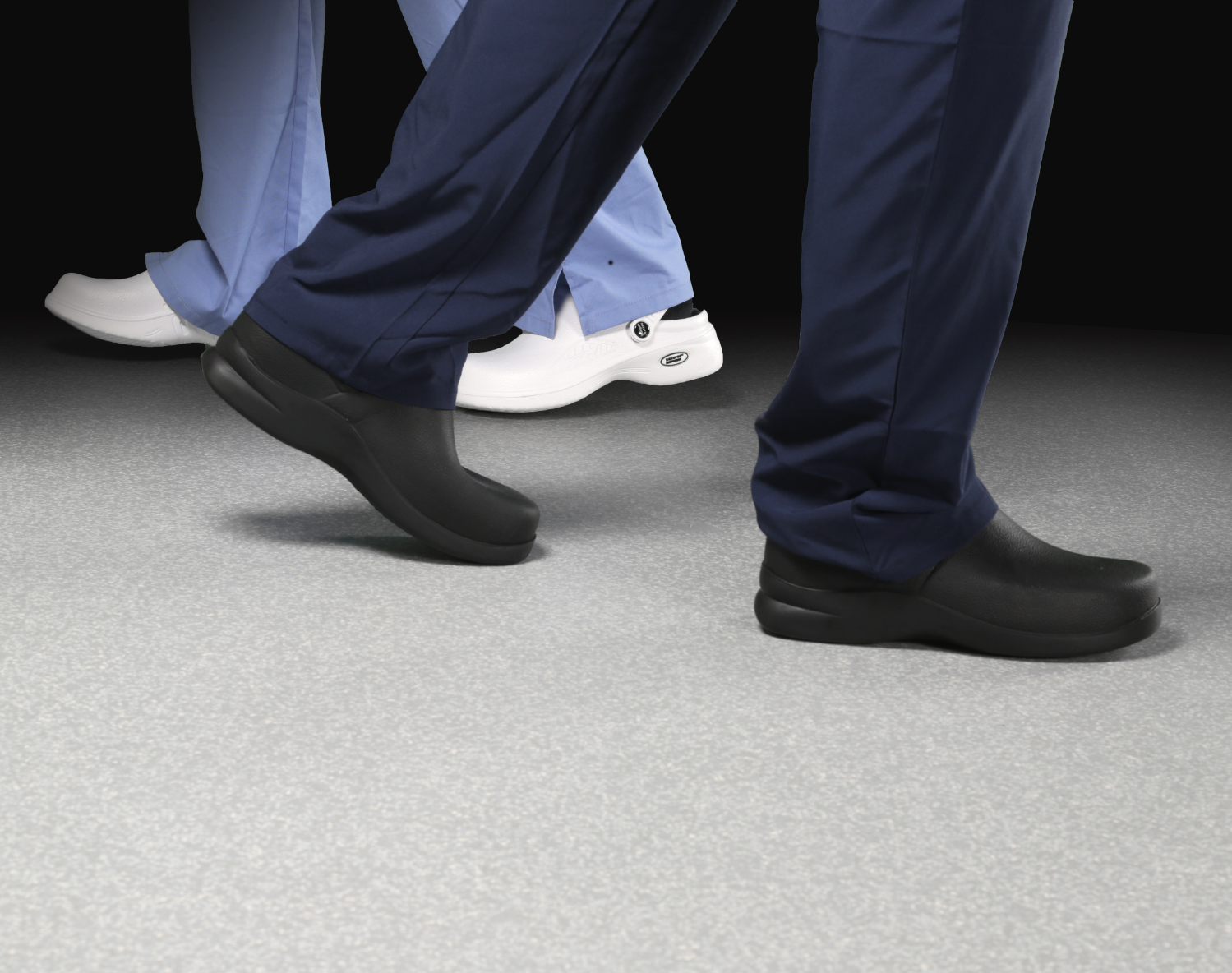
Seamless floors for seamless work -- built to keep business moving.
Upgrade to Stonhard seamless flooring for a sleek, durable, low-maintenance, hygienic solution that stands up to heavy use. Seamless resinous floors are perfect for commercial and industrial spaces and become a part of your structure, so unlike traditional flooring, after their long life or once a change is desired, they do not end up in land fills.
What are Seamless Floors?
Seamless floors are floors without seams, ridges, or welds. They are poured-in-place epoxy, urethane, or methyl methacrylate formulations and they become a natural part of a building’s very structure. You may also hear this type of flooring referred to as weldless.

The Benefits of Seamless Floors
There are many advantages of seamless floors. Seamless floors are preferred in many commercial and industrial environments due to their vast range of benefits, such as:
- high-performing qualities like impact, abrasion and chemical resistance
- a surface that is easy to clean
- a safer surface -- no joints or ridges offer numerous benefits related to foot traffic, rolling equipment, and hygiene.
- environmental considerations -- seamless floors do not end up in landfills and can incorporate recycled or renewable content.
- a smooth surface for a better work process -- think of a hospital corridor where patients are being wheeled on gurneys or a manufacturing plant where forklifts move through busy traffic aisles
- attractive design. As a design element, seamless floors produce a clean, sleek look that is coveted in commercial environments.
Seamless Floors are Perfect For:
Explore a Project
Explore projects where seamless flooring made all the difference. Dive into real-world examples where our expertise delivered flooring solutions built to last in the most demanding environments.
Recommended Seamless Flooring
Stonhard formulates seamless resinous floors for every environment. Our team of Territory Managers, Architectural and Engineering Representatives will assist you in choosing the best product for your environment with the look you desire.
FAQ
Got questions? We've got answers. This FAQ section covers the most common inquiries about seamless flooring to help you make informed decsions.
Seamless floors are continuous flooring systems that do not have joints, grout lines, or breaks in the surface. They are typically made from materials like epoxy, polyurethane, or resin, creating a smooth and uninterrupted surface.
- Hygiene: They are easy to clean and maintain since there are no grout lines or seams where dirt can accumulate.
- Durability: Seamless floors are highly resistant to wear, stains, and chemicals, making them suitable for high-traffic areas.
- Aesthetic Appeal: They offer a sleek, modern appearance and can be customized with various colors, textures, and designs.
- Safety: Some seamless floors can be enhanced with additives for slip resistance, ensuring a safer environment.
Installation typically involves several steps:
- Surface Preparation: Ensuring the substrate is clean, dry, and properly prepared.
- Priming: Applying a primer to enhance adhesion between the substrate and the flooring material.
- Application: Pouring, spreading, or troweling the seamless flooring material onto the prepared surface.
- Curing: Allowing the floor to cure and harden to achieve its full strength and durability.
Yes, seamless floors are highly customizable. They can be tailored in terms of color, texture, finish, thickness, and performance properties to meet specific needs. Company logos, graphics, and demarcation lines can also be incorporated into seamless floors.
- Regularly sweep or vacuum to remove debris.
- Mop with a neutral pH cleaner.
- Use an automatic scrubber with a soft nylon brush in facilities where this is needed.
- Avoid harsh chemicals that can damage the surface.
- Schedule periodic professional inspections.
The lifespan of seamless flooring depends on the material, environment, and maintenance, but generally, it lasts 10 to 30+ years.
Yes, seamless floors can be repaired if damaged. The repair process depends on the type of flooring and extent of damage. Minor cracks, chips, or wear may be patched or recoated without replacing the entire floor. Small areas may be resurfaced or recoated without affecting overall performance. Professional repair ensures the seamless finish is maintained preventing weak spots or visible patches.
- Many seamless floors have low volatile organic compounds, improving indoor air quality.
- Long-lasting floors reduce the need for frequent replacements, minimizing material waste.
- Some seamless floors incorporate recycled content or bio-based resins, making them more sustainable.
- Seamless floors require less water and fewer harsh chemicals for cleaning, reducing environmental impact.
- Light-reflective finishes on seamless floors can improve lighting efficiency, lowering energy consumption.
Choosing the right floor depends on your specific environment, performance requirements, and aesthetic preferences. Your local Stonhard territory manager can guide you on product selection, helping you find the right choice for your requirements and preferences.
Related Flooring Features
Expert Guides & Resources

Why Seamless Flooring Systems Outshine Terrazzo
We know the commercial flooring market offers a vast array of options designed to meet your business's specific requirements and budget. Here we take a look at how two flooring types differ, exploring advantages and disadvantages.
 Aerospace
Aerospace
 Water & Wastewater
Water & Wastewater
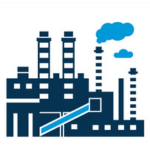 Chemical & Mining
Chemical & Mining
 Technology
Technology
 Government
Government
 Manufacturing
Manufacturing
 Transportation
Transportation
 Auto Dealerships
Auto Dealerships
 Distribution & Logistics
Distribution & Logistics
 Cannabis
Cannabis
